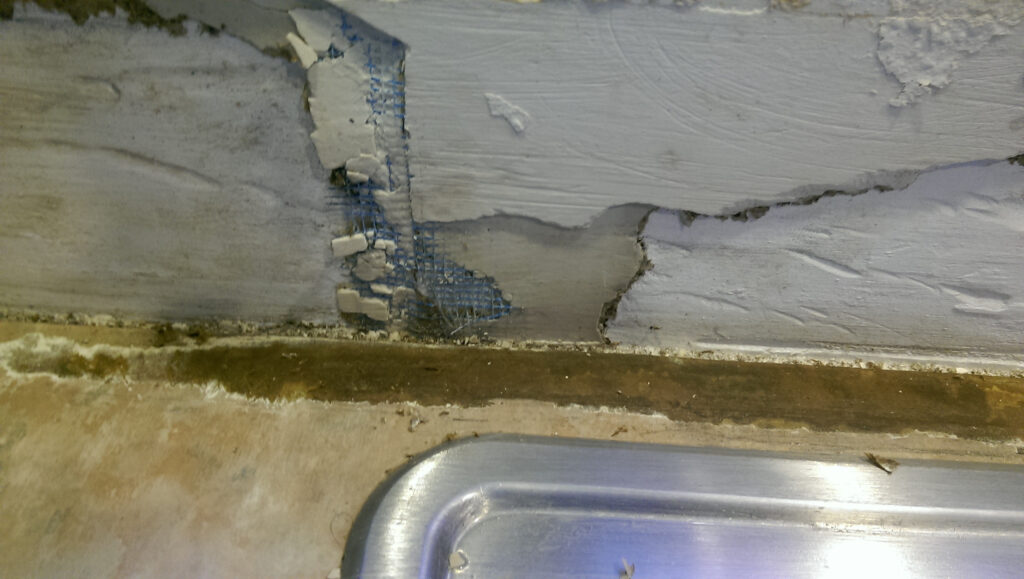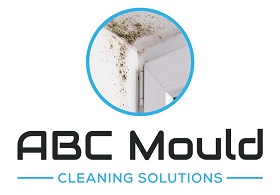Protecting Your Sydney Home from Mould After Spring Rains

Spring rains in Sydney bring much-needed refreshment to gardens and greenery, but they also create the perfect conditions for mould growth in homes. The combination of moisture, warmth, and humidity following heavy rain can turn your home into a breeding ground for mould. Understanding how moisture from rain contributes to mould problems, recognising vulnerable areas, and taking preventative steps are essential for keeping your home mould-free.
How Does Moisture from Rain Lead to Mould Problems?
When rain pours down in Sydney, it saturates the ground and the air, significantly raising the moisture levels around your home. This excess moisture can find its way into your house in several ways, leading to mould problems if not managed properly.
Infiltration Through Roofs and Walls
Rainwater can seep into your home through leaks in the roof, walls, or windows. Even the smallest crack or gap can allow moisture to enter, creating damp conditions that are perfect for mould to thrive. Over time, this moisture can lead to structural damage, making your home even more susceptible to mould.
High Humidity Levels
After a rainstorm, the humidity in the air increases, particularly in enclosed spaces like homes. High humidity creates a moist environment that mould needs to grow. Without proper ventilation, this humidity can linger, leading to mould growth on walls, ceilings, and other surfaces.
Standing Water
Heavy rains can cause water to accumulate around the foundation of your home. If your property has poor drainage, this water can seep into basements, crawl spaces, or lower levels of the house. Standing water, combined with the warm temperatures of spring, creates ideal conditions for mould to form and spread.
Condensation
After rain, you might notice condensation on windows, walls, or pipes due to the difference in temperature between the inside and outside of your home. This condensation can drip onto surfaces and contribute to mould growth if not wiped away and managed effectively.
Which Areas in Your Home Are Most Vulnerable to Mould After Rain?
Certain areas of your Sydney home are more prone to mould growth after spring rains due to their exposure to moisture and difficulty in drying out. Identifying these vulnerable areas can help you focus your mould prevention efforts where they’re most needed.
Basements and Crawl Spaces
These lower levels of the home are particularly vulnerable to mould because they are often dark, cool, and prone to moisture accumulation. Rainwater can seep through the foundation, leading to damp conditions that are perfect for mould. Poor ventilation in these areas exacerbates the problem by trapping moisture.
Attics and Roofs
Leaks in the roof or poor insulation can allow rainwater to enter the attic, leading to mould growth. Attics often lack proper ventilation, which means any moisture that gets in can remain trapped, creating a haven for mould. Checking the roof and attic regularly for leaks or signs of moisture is crucial, especially after heavy rains.
Bathrooms and Laundry Rooms
These rooms are already prone to high humidity and moisture due to daily activities like showering and washing clothes. After rain, the added humidity can push these areas over the edge, leading to mould growth, especially in areas that don’t dry out quickly, such as behind appliances, under sinks, or in grout lines.
Windows and Doors
Windows and doors are common entry points for rainwater, especially if they aren’t properly sealed. Moisture can seep in through gaps or cracks, leading to mould growth around the frames, sills, or on nearby walls. Keeping an eye on these areas after a storm can help you spot any problems early.
Kitchens
Kitchens are another area where moisture is common due to cooking and washing dishes. After spring rains, the added humidity can cause mould to develop in areas that are frequently damp, such as around the sink, under the refrigerator, or behind the stove. Regular cleaning and ensuring proper ventilation are key to preventing mould in the kitchen.
What Can You Do to Prevent Mould After Rain?
Preventing mould after spring rains requires a proactive approach that focuses on reducing moisture and improving ventilation in your home. By taking the following steps, you can minimise the risk of mould growth and protect your home from the harmful effects of moisture.
Inspect and Repair Leaks
Regularly inspect your roof, walls, windows, and doors for any signs of leaks or damage. Even small cracks can let in rainwater, leading to moisture problems. Repair any issues immediately to prevent water from entering your home.
Improve Ventilation
Ensure that your home is well-ventilated, especially in areas prone to moisture like bathrooms, kitchens, and basements. Use exhaust fans when cooking or showering and open windows to allow fresh air to circulate and reduce humidity levels.
Use Dehumidifiers
In high-humidity areas, consider using a dehumidifier to keep moisture levels in check. Dehumidifiers are particularly useful in basements, crawl spaces, and bathrooms where moisture can linger after rain. Keeping the humidity below 60% can significantly reduce the risk of mould.
Clean and Dry Wet Areas
After rain, check your home for any areas that are wet or damp and dry them immediately. This includes wiping down windows, drying off condensation on walls, and cleaning up any standing water. Keeping surfaces dry is one of the most effective ways to prevent mould.
Ensure Proper Drainage
Make sure that water drains away from your home’s foundation rather than pooling around it. Clean gutters and downspouts regularly to ensure they direct water away from the house. You might also consider grading the land around your home to improve drainage and reduce the risk of water seeping into the basement or crawl space.
Monitor Humidity Levels
Keep an eye on the humidity levels in your home, particularly after it rains. You can use a hygrometer to measure indoor humidity and take action if it’s too high. If you notice persistent high humidity, it might be worth looking into more permanent solutions like installing a whole-house dehumidifier.
What Are the Long-Term Solutions for Mould Prevention?
While short-term measures can help prevent mould after spring rains, long-term solutions are necessary for ongoing protection. Implementing these strategies can help you maintain a mould-free home year-round.
Waterproofing Your Home
Waterproofing the exterior of your home can prevent water from entering through the foundation, walls, or roof. This might include applying waterproof coatings, sealing cracks, and ensuring that your home’s exterior is in good condition to withstand heavy rain.
Upgrading Insulation and Ventilation
Proper insulation can prevent condensation and moisture buildup in walls, ceilings, and attics. Upgrading your home’s insulation, particularly in vulnerable areas, can reduce the risk of mould. Similarly, improving your home’s ventilation system ensures that air circulates properly, reducing humidity and preventing mould growth.
Installing a Sump Pump
In homes with basements, installing a sump pump can help manage water accumulation after heavy rains. Sump pumps remove water that has seeped into the basement, preventing it from becoming a breeding ground for mould.
Regular Home Maintenance
Regularly maintaining your home is crucial for long-term mould prevention and ABC Mould Cleaning Solutions can guide you through this process. This includes inspecting and repairing roofs, cleaning gutters, checking for leaks, and ensuring that your HVAC system is functioning properly. Staying on top of maintenance tasks helps you catch potential issues before they lead to mould growth.
Landscaping for Better Drainage
Adjusting the landscaping around your home can help direct water away from the foundation. This might include adding swales, installing French drains, or regrading the land to improve drainage. These measures can significantly reduce the amount of water that reaches your home after rain.
Why Should You Consider a Professional Mould Inspection?
While taking preventive measures can significantly reduce the risk of mould, there are times when professional help is necessary. A professional mould inspection offers several benefits and can provide peace of mind, especially after a particularly wet spring.
Thorough Detection
Professionals have the tools and expertise to detect mould in hidden areas that might not be visible during a casual inspection. This includes checking behind walls, under floors, and in other hard-to-reach places where mould might be growing unnoticed.
Accurate Assessment
A professional inspection can accurately assess the extent of mould growth and identify the underlying causes. This helps in addressing not just the visible mould but also the source of the problem, ensuring that it doesn’t return.
Effective Remediation
If mould is found, professionals can provide effective remediation services that remove the mould and prevent it from coming back. This might include cleaning, treating affected areas, and offering advice on how to keep your home mould-free in the future.
Health Protection
Mould can pose serious health risks, especially for those with allergies or respiratory conditions. A professional inspection ensures that your home is safe and that any mould is dealt with promptly and thoroughly.
Keep Your Home Mould-Free and Act Now
Spring rains can increase the risk of mould in your Sydney home. By understanding how moisture contributes to mould problems and taking both short-term and long-term preventive measures, you can protect your property from damage. If you suspect mould, professional inspection and removal are crucial for thorough protection.
ABC Mould Cleaning Solutions is ready to help. With our expert inspection and removal services, we ensure your home stays safe and healthy. Contact us today to schedule an inspection and keep your home mould-free.
